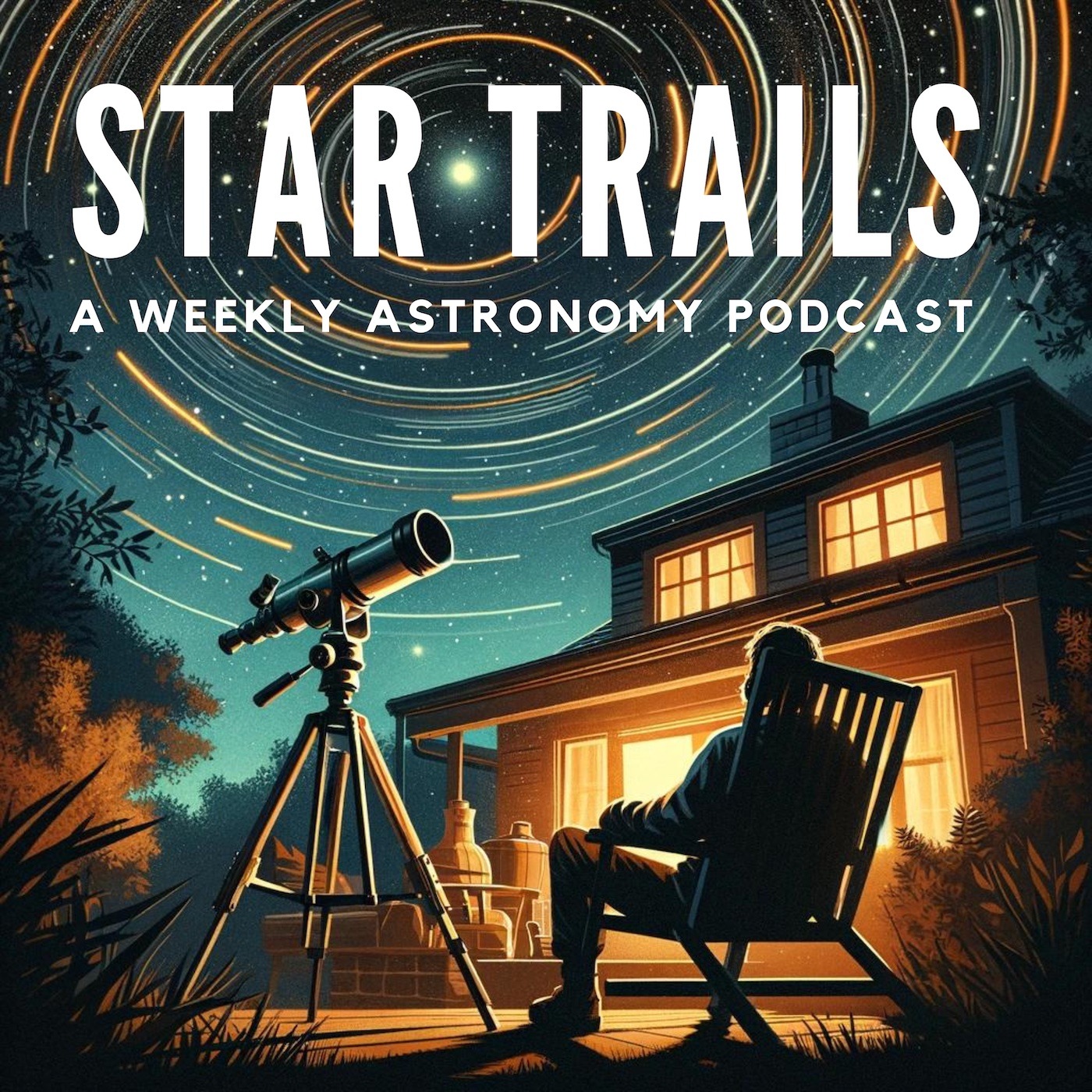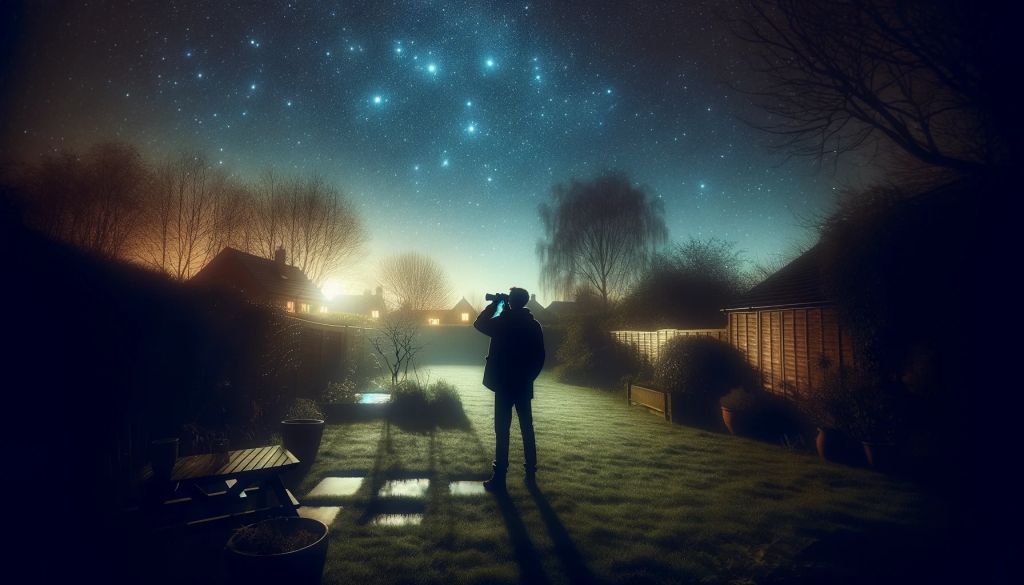
Spring Equinox Skies, Plus, Binoculars for Astronomy – Star Trails: A Weekly Astronomy Podcast
EP7
Join us in this episode as we navigate the night sky for the week starting March 17, 2024.
As the week of March 17th, 2024, unfolds, we stand on the cusp of the spring equinox, a time of balance between day and night, and a herald for the celestial wonders of the new season. Look for Mercury at dusk as it heads toward elongation; Jupiter continues to dazzle and catch the Zodiacal Light.
Plus, we offer up a quick guide to buying your first pair of binoculars!
- Sky map for week starting March 17, 2024
- The Astronomical League’s Binocular Messier Observation Program
- Drew’s new binoculars (Oberwerk 11×70)
Transcript
Greetings, stargazers, and welcome back to another episode of Star Trails, the podcast where we journey through the cosmos together. My name is Drew.
As the week of March 17th, 2024, unfolds, we stand on the cusp of the spring equinox, a time of balance between day and night, and a herald for the celestial wonders of the new season. So, let’s venture into the night and discover what the stars have in store for us this week.
As twilight deepens after sunset, keep your eyes peeled for Mercury as it edges closer to its greatest elongation on March 24th. This week, our solar system’s swift messenger will be visible low in the western sky, basking in the Sun’s afterglow. Catching Mercury will be a treat—a bright, elusive object marking where the sun’s light meets the darkness of space.
Jupiter, the gas giant, continues to grace our evening skies, setting before midnight. Look for it in Aries, shining brightly and accompanied by its four Galilean moons. Through a telescope, these moons provide a nightly show of their own, moving swiftly in their orbits around Jupiter.
And speaking of lights, have you ever witnessed the zodiacal light? This ethereal glow, best seen in the west just after dusk, arises from sunlight reflecting off cosmic dust between the planets. For the keen observers among you, this is a magical time to witness such a spectacle, as the conditions align perfectly in the week ahead.
The Moon begins this week in its First Quarter phase and transitions to a Waxing Gibbous phase, with 97 percent of the Moon’s face illuminated by week’s end. The Full Moon arrives a few days later on March 25.
Now, let’s turn our gaze to the constellations of Leo, Virgo, and Cancer, each a gateway to the universe beyond. Leo, the lion, is not just a figure of mythology but also home to the splendid Leo Triplet—a group of interacting galaxies that offers a glimpse into the gravitational dance of the cosmos. M65, M66, and NGC thirty-six twenty-eight await your gaze, each a spiral galaxy entwined in a celestial ballet.
In Virgo, the maiden holds the key to the Virgo Cluster, an assembly of more than a thousand galaxies. This cluster is a treasure trove for galaxy hunters, with the bright M87 and its famous plasma jet being a highlight. The sheer number of galaxies in this area makes it a favorite target for astronomers, offering a profound sense of scale and the vastness of the universe.
Not to be outshone, Cancer, the crab, cradles the Beehive Cluster, or M44, a sparkling jewel box of stars that’s easily seen through binoculars. This open cluster, one of the nearest to Earth, is a dazzling collection of stars that offers a breathtaking view of stellar community.
As we explore the night sky together, you might be thinking about taking the next step in your astronomical journey. Binoculars are a fantastic way to do just that. In fact, I recently purchased a new pair myself, and I’ve enjoyed scanning the sky on clear nights, jumping from target to target while reclining in a chair in my backyard.
Many amateur astronomers opt for binoculars over telescopes for several compelling reasons.
Binoculars offer simplicity and ease of use; there’s no complex setup involved, making them perfect for spontaneous stargazing sessions. They are portable, and provide a wider field of view than telescopes, making it easier to sweep the night sky and appreciate the broader celestial landscape. For those on a budget, binoculars generally present a more affordable entry point into astronomy, allowing enthusiasts to start their celestial explorations without a hefty investment.
Here’s a quick guide to selecting your first pair:
Aperture Matters: Look for binoculars with a large aperture — that’s the diameter of the front lens — at least 50mm. A larger aperture gathers more light, making faint objects like nebulae and galaxies more visible.
Binoculars are categorized by their magnification and light-gathering capability. For instance, a pair of 7 by 35 binoculars has a magnification of 7 times, and a 35 millimeter aperture. As you can deduce, 10 by 50 binoculars have more magnification and light gathering potential. But don’t assume more magnification is always better and immediately go for 15 by 70 — or higher — optics. That increased magnification can make for shakier views and a heavier instrument.
A magnification of 7 to 10 times is ideal for astronomy.
Since you’ll be holding them up for extended periods, ensure your binoculars are comfortable to hold. Consider a tripod adapter for heavier models to keep the view steady.
There are great options available at various price points. Investing in a slightly more expensive pair can offer a significant improvement in the quality of your stargazing experience, but even a cheap pair can offer up usable views. For example, the Astronomical League’s Binocular Messier observation program was designed to be completed with a $20 pair of binoculars that can be purchased at Wal-Mart!
I’ll include a link to that program, and to the new binoculars I just purchased, in the show notes.
Armed with your new instrument, the night sky becomes an even richer tapestry of wonders to explore. Whether it’s the craters of the Moon, the moons of Jupiter, or the myriad stars that dot our galaxy, each observation brings us closer to the cosmos.
As we conclude this week’s episode, remember that each night offers a unique chapter in the ongoing narrative of the universe. Thank you for joining us on Star Trails. Until we gaze upon the stars together again, keep exploring, dreaming, and wondering. Clear skies and happy stargazing.


Leave a comment